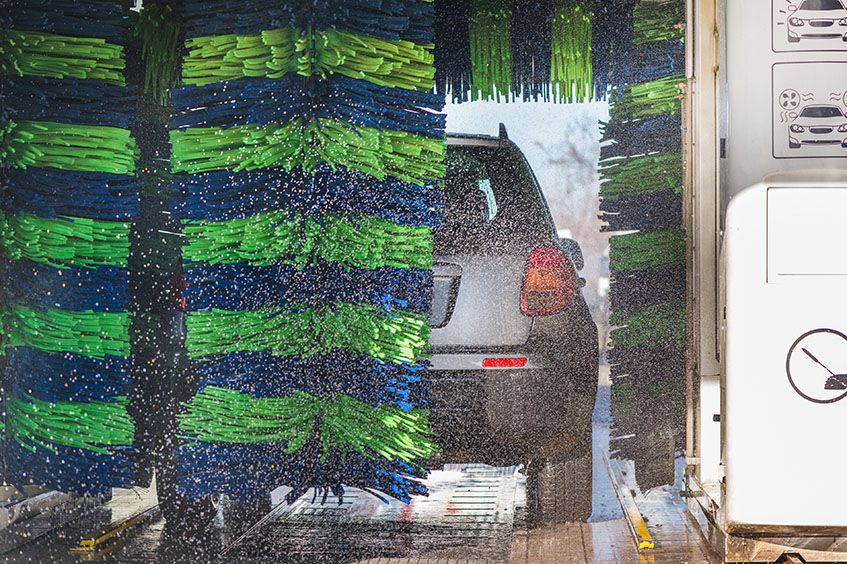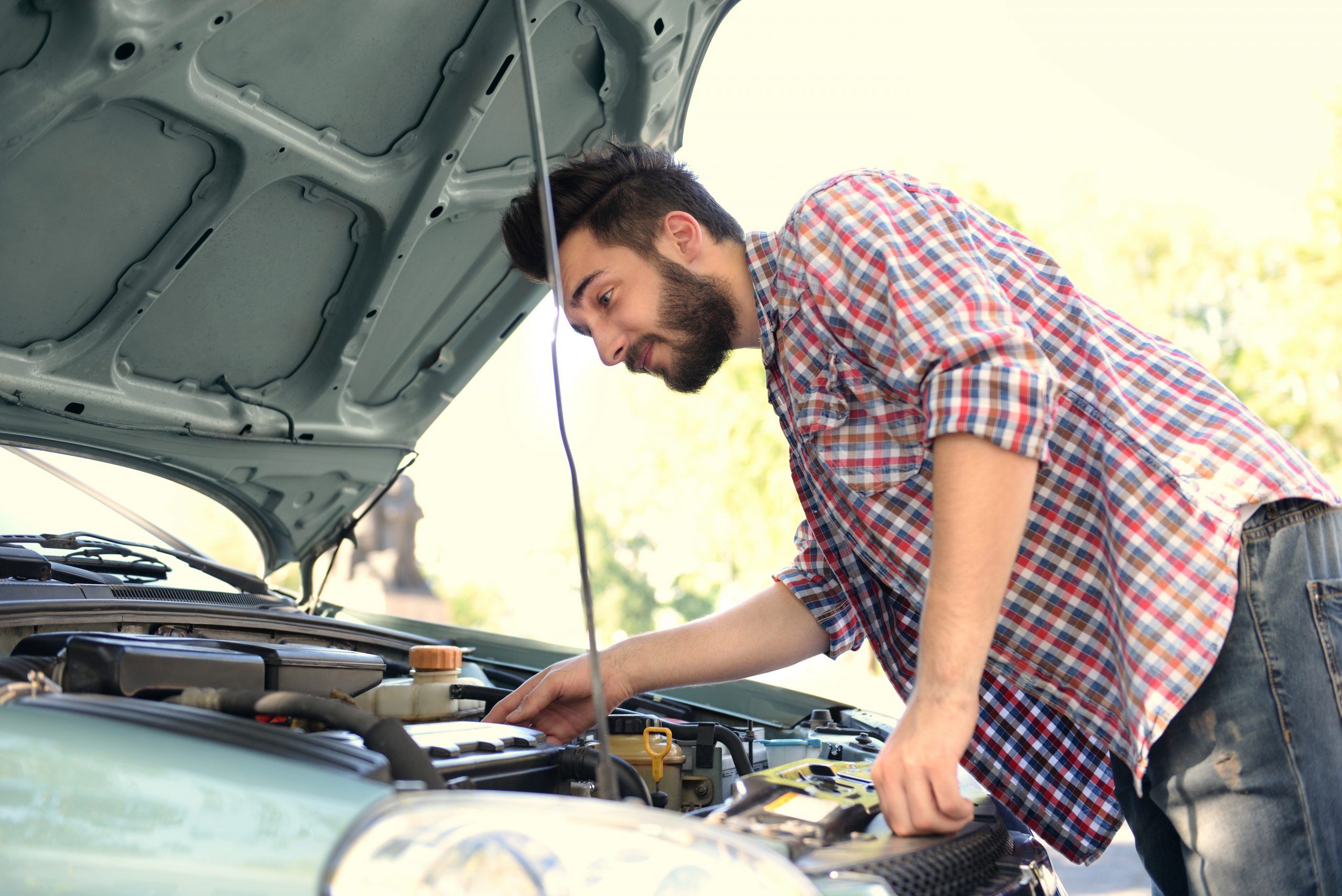Vehicle Maintenance Tips
Automobile fluids and toxins from leaks or maintenance are a common source of water pollution. Oil stains on your driveway and outdoor spills of antifreeze, brake fluid, and other automotive fluids are easily carried into a storm drain by rain or irrigation water, and then flows into our waterways. Proper auto care can reduce pollution:
- Maintenance: Have your car serviced regularly to stop existing leaks and help identify potential leaks. This not only helps the environment, it can also save money on car repairs. Visit www.checkyournumber.org to find out how often your car really needs an oil change service; many newer cars can go a lot longer than 3,000 miles.
- Storage: Store oily car parts and fluid containers where rain and runoff cannot reach them. It’s a good idea to store these in a second container or bin in case a spill happens in your garage.
- Recycling & Responsible Handling: Never dump used oil, antifreeze, or gasoline down a storm drain, in a ditch, or on the ground. These fluids should also never be dumped in your garbage. Click here to find locations for used antifreeze, auto battery, and tire recycling locations in the county. Click here for used motor oil and filter recycling.
- Spill Clean Up: Clean up spilled brake fluid, oil, grease, and antifreeze with kitty litter or other absorbent material. This is called a “dry” clean method. Do not hose them into the street where they can eventually reach local waterways.
- Trash Management: Keep a reusable bag inside your car to place litter and garbage into as you travel.
- Tarp Your Load: Properly covering or securing loads reduces litter and debris that fall out of truck beds and potentially end up in local waterways. It also helps avoid littering fines and fees up to $1,000 and ensures that you’re following the law.
- Drive Green: Looking to further lighten your vehicle’s environmental footprint? Here’s a list of 10 tips to help make your driving life a little greener.
Disposing of Automotive Waste
Car Washing Tips

Washing your car in the driveway creates runoff and the dirty, soapy runoff drains directly into storm drains, picking up oil and other pollutants as it goes. It also uses a lot more water than you might think. A short 10-minute car wash at home can amount to more than 100 gallons of water! Use these car washing best practices to help protect our San Mateo County waterways:
- Leave it to the pros: Commercial washers are equipped with high-pressure hoses and sophisticated machinery that limits the amount of water used. An automatic car wash will use about 30-45 gallons of water per vehicle according to a 2018 study by the International Carwash Association. Commercial car wash facilities recycle the wash water or are connected to the sanitary sewer system that will treat the wash water.
- Get on the grass: If you’re the DIY type, washing your car on a permeable surface like grass or gravel will allow the ground to absorb the wash water and filter the soap and other residues rather than allowing it to flow to the storm drain and, eventually, to the local creeks.
- Switch products: Look for products labeled “non-toxic,” “phosphate free,” and “biodegradable,” which are more environmentally-friendly.
- Be water wise: If you do wash your car at home, use a bucket of soapy water rather than running the hose. Keep a spring-loaded nozzle on the hose.
- Go waterless: Wash your car using waterless cleaners (these new cleaners are designed to be sprayed onto your car and then wiped off with a rag—no water needed!)
Fundraiser Car Wash Tips
Fundraiser car washes are a valuable source of funding for local groups and organizations. A Bay-Friendly fundraiser car wash protects our creeks and Bay by not allowing wash water to enter the storm drain system. When planning a carwash event, please consider the following options to make your car wash Bay-Friendly.
- If possible, partner with a commercial car wash – or a business or organization – that can properly manage or dispose of wash water from car washes
- Prior to your car wash, hold a meeting with all fundraiser participants to explain proper procedures for managing car wash wastewater
- Use less toxic, non-toxic, biodegradable products and stay away from acid-based wheel cleaners or engine degreasers
- Use buckets of soapy water instead of hoses and make sure to wring sponges or rags into the buckets instead of the ground
- Use spray nozzles with automatic shut off to reduce water consumption
- Once the event is finished, empty buckets of wastewater into sinks, toilets, sanitary clean-out or onto landscapes areas where wastewater can be absorbed
- Have a volunteer walk the area to pick up and dispose of trash
Tire Maintenance Tips
Tire wear is also believed to be a significant source of water pollution, according to a recent study conducted by the San Francisco Estuary Institute. The rubber on your tires slowly erodes over time as you drive around, which eventually washes into streams and other waterbodies as tiny fragments, called microplastics. Some of the problem may be reduced by maintaining proper pressure. Not to mention, our tires achieve optimal fuel performance and longevity with the right amount of air pressure. This means if you keep your tires properly inflated, you will:
Learn how to check and adjust your tires’ pressure here. Think You Know Tires? Take the CalRecycle Quiz below to test your knowledge on tire pressure, safety, and fuel efficiency!
Alternative Transportation Options
There are many sustainability benefits of riding alternative transportation options. Some include:
- Reducing fuel consumption
- Saving money
- Mitigating traffic congestion
- Reducing greenhouse gas emissions and related climate change impacts
- Reducing stormwater pollution
- Improving regional air quality
- Improving physical and mental health by getting more exercise
Rail: Taking Caltrain or BART is a relaxing and convenient way to commute, whether you are heading off to work, a ball game, or running errands. By taking the train you can practice pollution prevention. With a little planning and commitment, you can help reduce your individual impact on the environment.
Bus: Taking the SamTrans bus system is another great way to reduce pollution—by taking the bus you join a giant carpool. The time you spend on the bus can be used to read, work, relax, or just think about things. It’s your uninterrupted time to do things you can’t do when driving or sitting in heavy traffic.
Bicycle: Bicycling is a great form of recreation, exercise, and an excellent form of alternative transportation. Many bicyclists claim regular bicycling makes them feel better and more productive, and in some cases, cause them to undergo personal transformations! In addition, San Mateo County has hundreds of miles of scenic roads and trails for bikers. There are also great incentives in San Mateo County to modeshift your commute – continue reading to find out.
Give it a try! Check out the below resources for more information.
